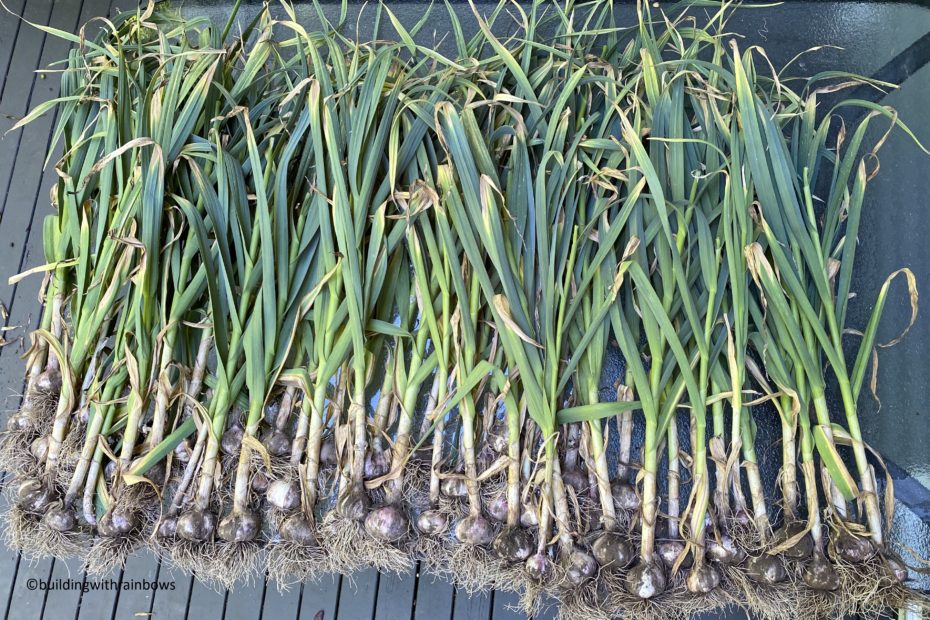Does your family enjoy a lot of garlic? We eat a lot around here, so we were excited to learn how easy it is to grow. In cooler climates, you can plant it in mid-to-late fall when you’re cleaning up the garden; in warmer regions you can plant just after the new year. Then in the spring its so delightful to have something fresh and green already growing and looking promising for the coming year!
There are two main categories of garlic—hardneck and softneck garlic. The term neck refers to the stem and how stiff it is. Most of what you get at the grocery store is softneck—when you see it braided in tight plaits, that will be soft neck. Hardneck garlic has a stiff stem that goes straight through the middle, and fewer cloves per bulb, but the cloves tend to be bigger and are much easier to peel.
Hardneck has another (delicious!) advantage—garlic scapes! (the flower stalk) Pick them before the bud blooms as you don’t want the plant to put any energy into flowers and seeds, all the energy should go into growing the biggest plumpest bulb possible. The best time to pick the scapes is when they’ve made one full loop of curl. From my 20-foot row of garlics, I got a lovely armload of scapes!
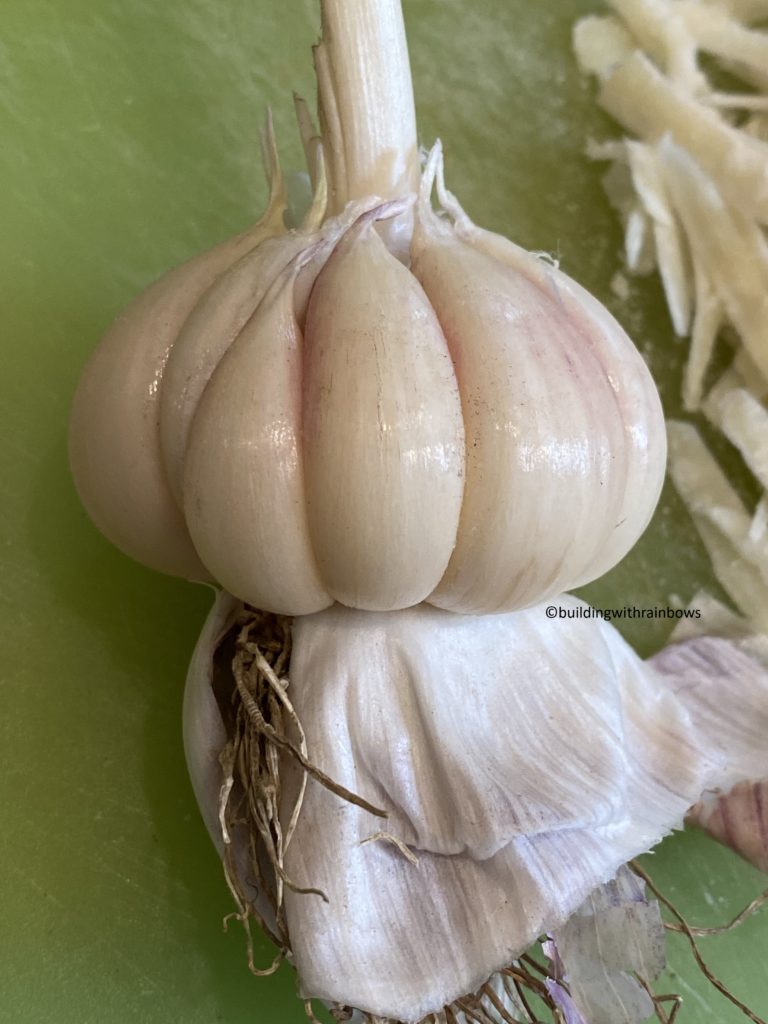
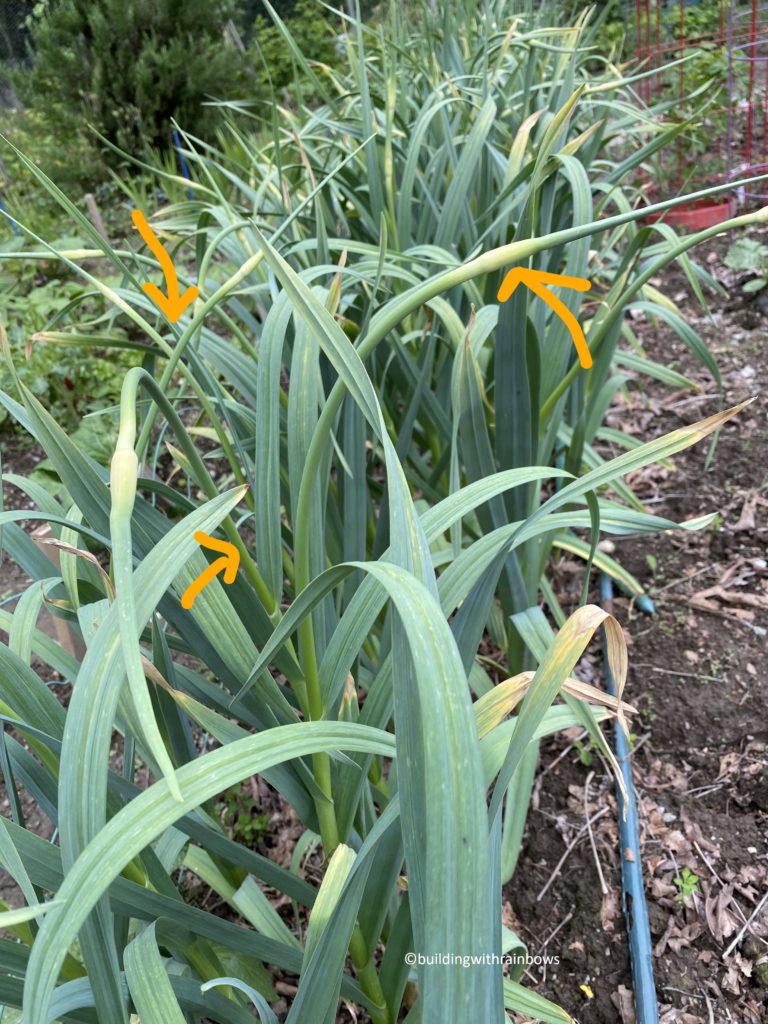
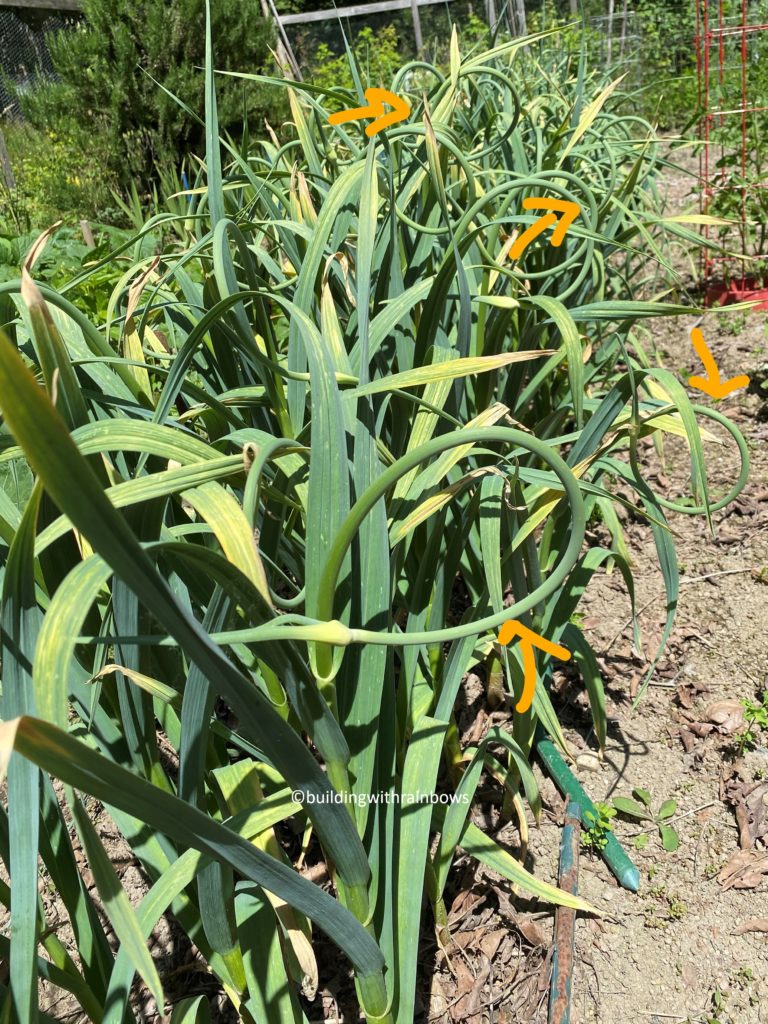
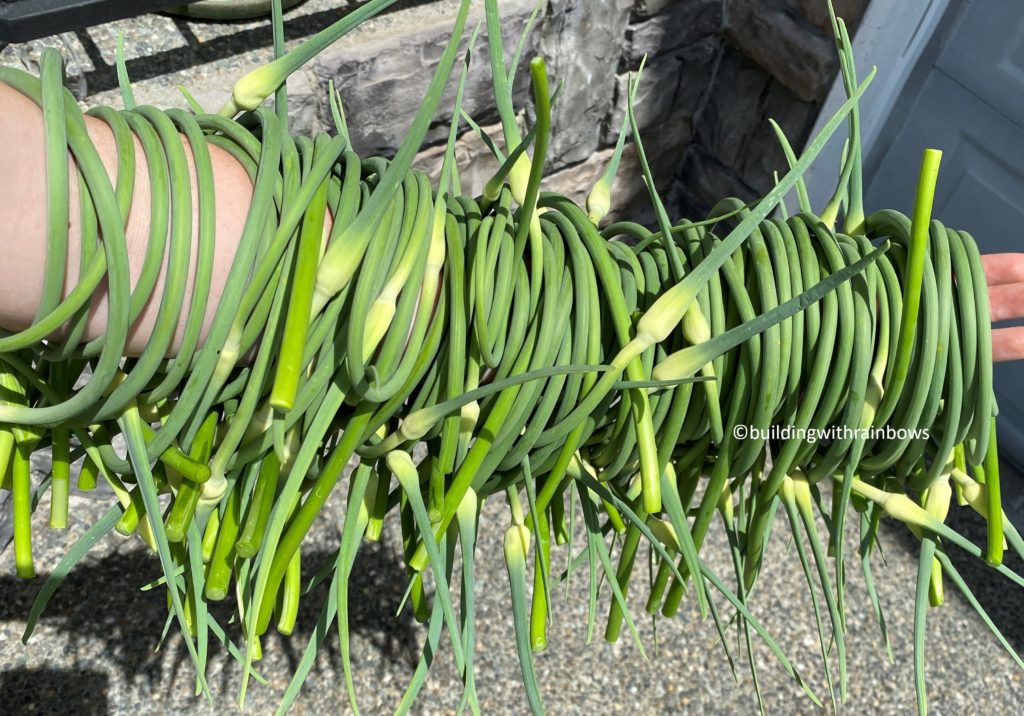
Garlic scape pesto is a big favorite here—we love it plain on crackers or mixed with pasta. Because it freezes well, we can make a big batch in early summer and then pack most of it away for a fresh flavor when its cold outside. If you have either a food processor or a powerful blender, garlic scape pesto is easy to make. We make a huge batch, but scaled back, these are the approximate proportions we used. This recipe is very easy and very forgiving, and easy to adjust to taste, or to scale if you have a load of scapes.
Throw it all in a food processor , and pulverize:
12ish Garlic scapes (cut into ~1 inch pieces flower heads removed)
1/8+ cup Pine nuts
1/8+ cup parmesan cheese, shredded
1/8+ cup olive oil
Optional:
splash of lemon juice: great to help preserve fresh color if you’re freezing
Splash of White wine: adds a little extra flavor boost
Handful of Basil: if you want a more classic pesto flavor, but don’t do this if you’re planning to freeze it as it oxidizes and takes on an odd color
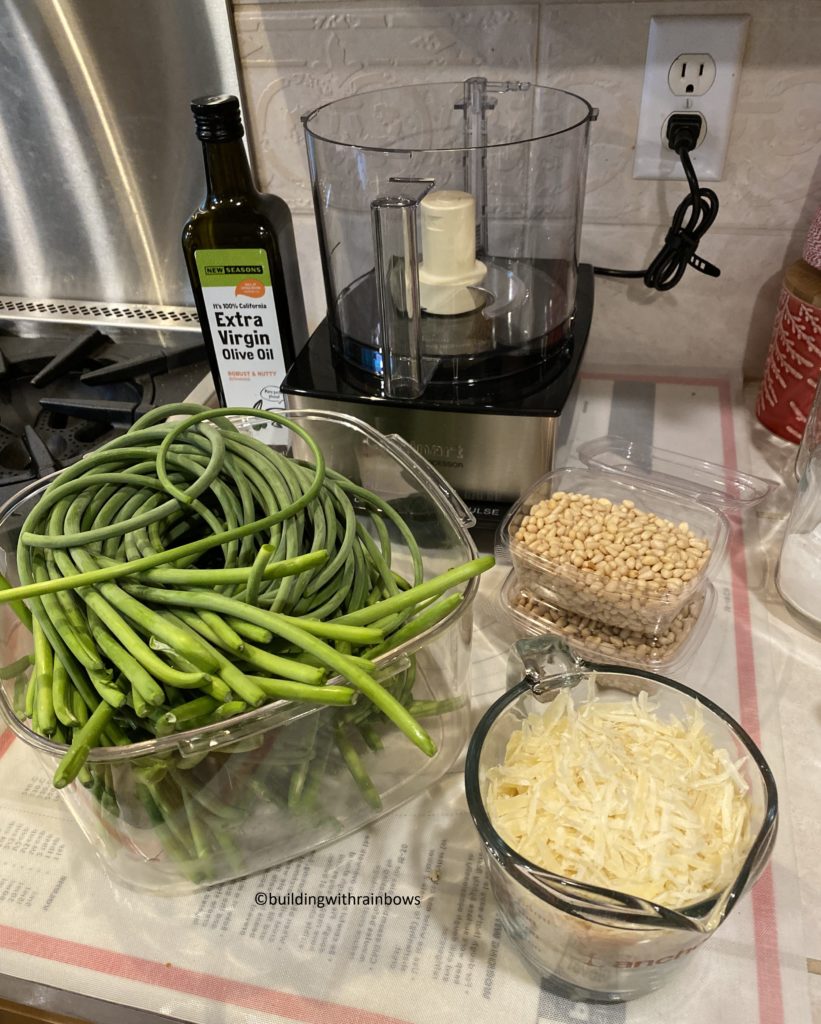
If your audience is sensitive to strong flavors, add more pine nuts, cheese and olive oil in ~equal proportions. If you’re looking for something to mix with pasta, loosen it up with a bit more olive oil. Look at that amazing fresh color!
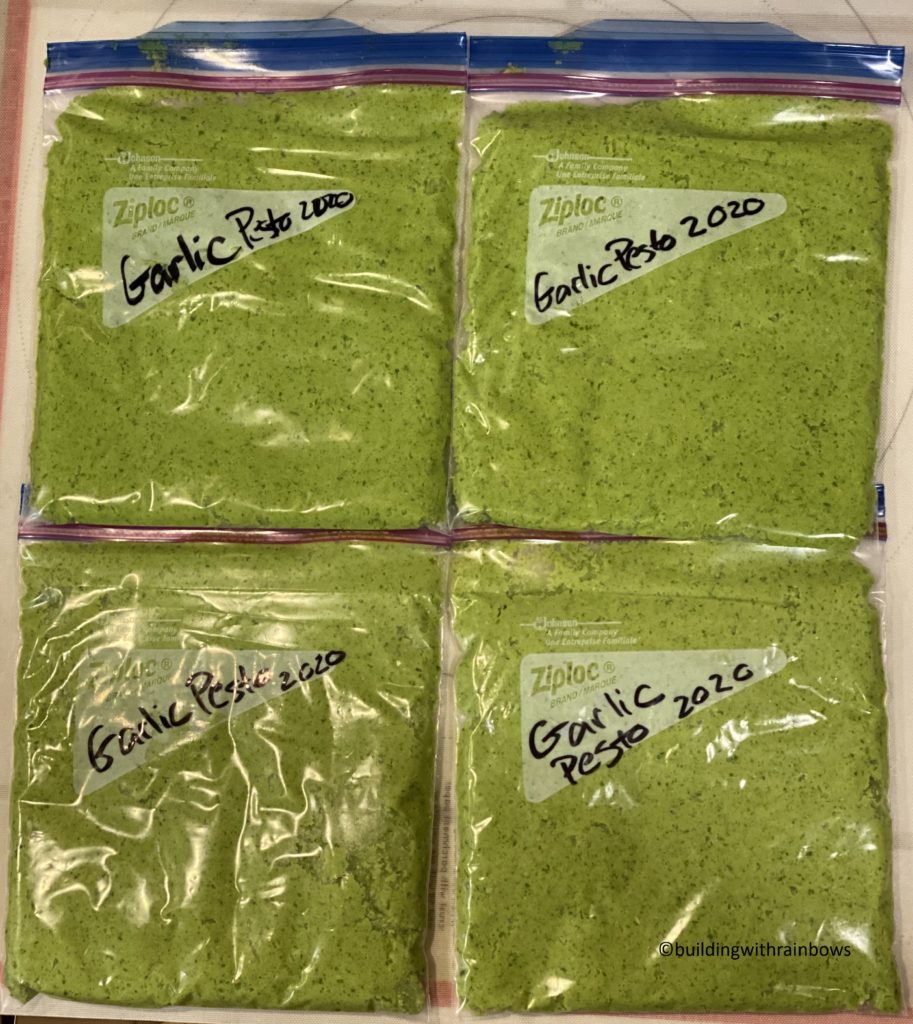
We freeze it in quart-size ziplock freezer backs, spread flat to get all the air out (and because it freezes faster this way). This year we put four bags in our freezer, gave one to a neighbor and had some to eat right away. When its time to thaw, if a full bag’s worth isn’t needed, its easy to break out only a portion and leave the rest for another day.
A few weeks after the scapes are ready, the garlic is ready to harvest—when the leaves are starting to turn brown. Use a pitch fork to gently reach under the bulbs, and lift them up, loosening the soil and making it easy to pull the bulb. Shake off most of the dirt, but don’t brush them clean un they’re dry so you don’t damage the skins protecting the cloves.
The garlic is best when it has dried fully—we leave it in the shade out of the rain for a couple of weeks at least to dry out, but once dried, it should stay good through the winter if you keep it dry and cool. If you’re clever, you even save some to plant for the next season! (but we usually end up eating ours pretty quickly ?
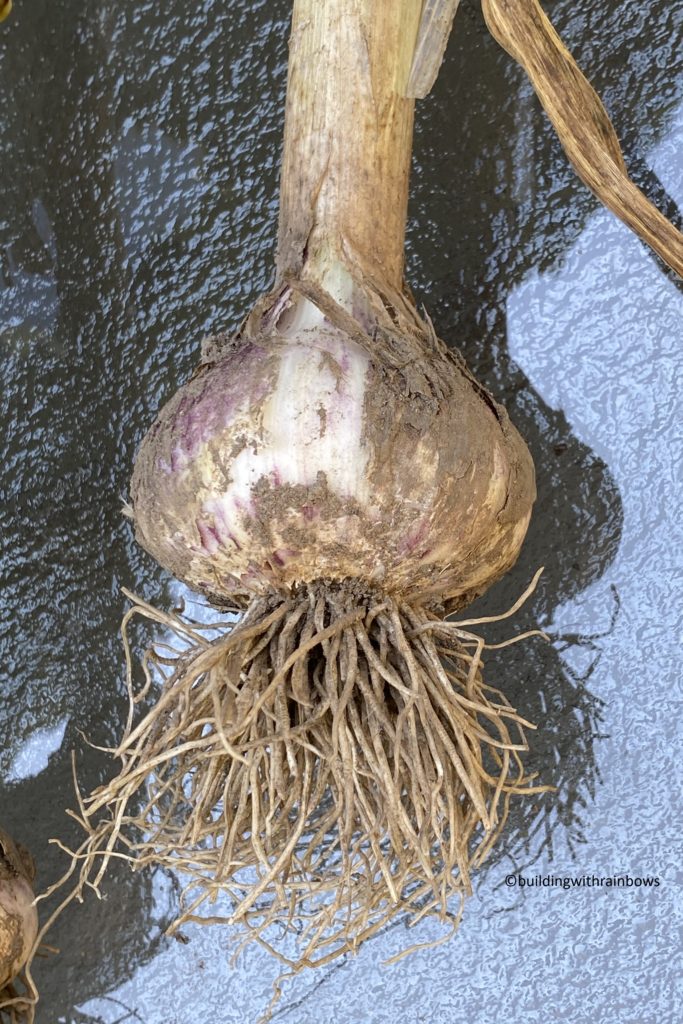
The links in this post are affiliate links. That means when you purchase through our links, Building with Rainbows receives a small commission at no cost to you. Thank you for supporting us.
